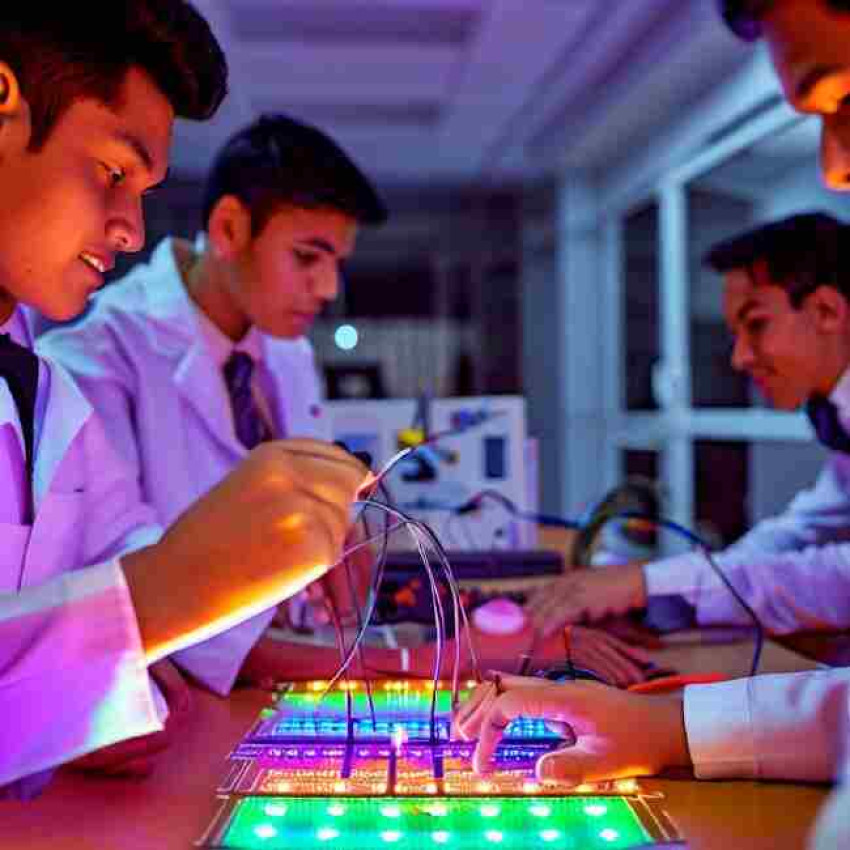
Note: In today’s fast-paced world, advertising and information display have become increasingly crucial for businesses to grab the attention of potential customers. One effective way to do this is through high-quality LED sign board or LED screen rental in Malaysia, such as the ones offered by HeloLED.HeloLED offers various indoor and outdoor digital sign boards, billboards, and branded digital outdoor signage. The importance of these LED screens cannot be overstated in the modern advertising landscape. With the ability to display high video image quality, these screens can help businesses stand out from their competitors and capture the attention of potential customers. High-quality LED displays and signboards from HeloLED are essential for organisations wishing to up their advertising and information display game. With their potential to attract consumers and graphically present businesses, these screens are a must-have for any modern business trying to flourish in today’s competitive industry.
Introduction:
Understanding the principles of electronics and STEM (Science, Technology, Engineering, and Mathematics) has become increasingly crucial in today's technology-driven world. LED circuit kits are a good approach to introduce these ideas to pupils. With the help of these kits, students may create and experiment with simple electronic circuits, which encourages creativity, critical thinking, and a strong grounding in STEM disciplines. In this post, we'll look at how LED circuit kits can be used as effective teaching resources for STEM and fundamental electronics lessons.
The Benefits of Interactive Learning:
Effective education is built on hands-on learning, especially in fields like electronics and STEM. LED circuit kits give students a concrete way to interact with ethereal ideas and theories, enhancing learning and making it more memorable. These kits frequently include wires, a breadboard, resistors, switches, LEDs (Light Emitting Diodes), and other parts. Students can better understand the connections between various elements in a circuit by physically connecting these components and witnessing the consequences.
Creating a Stable Electronics Foundation:
LED circuit kits are a great place to start when teaching electronics since they make basic ideas more understandable. This is how:
1. Basic Circuit Components: LED circuit kits come with necessary parts like resistors and LEDs. The functions of components and how they affect circuit behaviour are taught to students.
2. Circuit Connections: Students discover how to arrange parts on a breadboard and link them together. They learn about current flow, circuit routes, and the value of appropriate connections from this.
3. Polarity and Voltage: Because LEDs are polarised, they can only be connected in one direction at a time. Students learn about polarity and the significance of voltage direction through this.
4. Ohm's Law: By experimenting with various resistors in the circuit, students may better comprehend Ohm's Law, which explains how voltage, current, and resistance are related to one another.
5. Series and Parallel Circuits: Students can construct both series and parallel circuits using LED kits, which helps them understand how current flow and brightness differ.
Fostering Problem-Solving and Critical Thinking Capabilities
Students are encouraged to think critically and solve difficulties as they experiment with different settings and resolve problems using LED circuit kits. Students must determine the cause of a circuit's malfunction, which could be anything from a loose connection to improper component placement. Their ability to analyse problems and persist in finding solutions is improved by this process.
Supporting Creativity:
LED circuit kits encourage creativity in addition to basic information. In order to generate distinctive lighting patterns or effects, students might experiment with various arrangements. This fosters their ingenuity and creativity in addition to solidifying their understanding of circuitry.
Applications in the Real World:
LED circuit kits serve as a link between abstract ideas and practical uses. To demonstrate how LED circuits are employed in commonplace gadgets like flashlights, traffic lights, and digital displays, teachers might use real-world examples. Students are motivated to study more about electronics as a result of this connection, which enables them to recognise the significance of what they are learning.
Integration of STEM disciplines
LED circuit kits are a fantastic tool for teaching a variety of STEM disciplines since they are interdisciplinary:
1. Science: Students study the nature of light, how electrons behave in circuits, and the underlying physics of LED technology.
2. Technology: Using LED technology, students can learn about binary coding, semiconductors, and digital displays.
3. Engineering: The construction and improvement of circuits require engineering expertise in the form of layout design, component selection, and troubleshooting.
4. Mathematical ideas are applied by students in order to compute resistor values, measure voltage and current, and comprehend circuit equations.
Diversity and Inclusivity:
No of a person's gender or origin, LED circuit kits are inclusive instructional tools that can ignite an interest in electronics. It's important to promote diversity in STEM professions, and these kits give students with different degrees of background knowledge an accessible entry point.
Conclusion:
For teaching fundamental electronics and STEM concepts, LED circuit kits are fun and instructive tools. These kits enable students to build a strong foundation in electronics by providing practical experience, encouraging critical thinking, and encouraging creativity. LED circuit kits serve as a great example of how practical, interactive learning can enlighten young minds as educators continue to look for effective ways to engage pupils in STEM disciplines.




